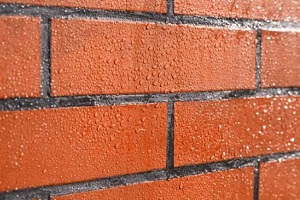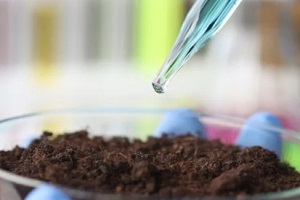 Commercial buildings have greater square footage than most residential structures, and with that increased size comes higher vulnerability to the effects of water. Commercial waterproofing a building is an important step to take to keep it sound and in good repair for many years, but many owners and managers don’t realize that waterproofing also has numerous environmental benefits.
Commercial buildings have greater square footage than most residential structures, and with that increased size comes higher vulnerability to the effects of water. Commercial waterproofing a building is an important step to take to keep it sound and in good repair for many years, but many owners and managers don’t realize that waterproofing also has numerous environmental benefits.
If you were on the fence about committing to waterproofing your commercial building, here are some of the environmental advantages that you probably didn’t factor into your choice.
What Waterproofing Looks Like
Commercial waterproofing can take many forms, but in the end, the benefits for nature and the climate will be felt regardless of which method you choose. The most common way to waterproof a structure is to apply a membrane to it that absorbs into the structural material or clings to it, creating a moisture barrier.
This can be done even after a building is constructed, and in the most complicated of scenarios, it can be applied from inside rather than on the exterior of the foundation. Other options can only work if they are completed while the structure is being built.
This includes making the foundation and other structures out of waterproof concrete, whose matrix composition not only repels water but can also self-repair minor cracks. No matter which waterproofing option is right for your building, you can still make a positive difference for the environment.
The Environmental Benefits of Waterproofing Your Commercial Building
Waterproofing your commercial structure can help protect the environment while simultaneously ensuring that your structure lasts for as long as possible. The environmental benefits include:
 Reduction of soil contamination – When water infiltrates into masonry like concrete, it begins a process of expansion and contraction that pushes the material apart, resulting in cracks. As cracks form, particulates and gasses are released from the masonry, which then seep into the soil. Water running away from the structure then carries these contaminants away from the building, where they can spread throughout the ground and even enter the water table, rivers and other natural areas. Waterproofing stops the cracking and breakdown that leads to contamination.
Reduction of soil contamination – When water infiltrates into masonry like concrete, it begins a process of expansion and contraction that pushes the material apart, resulting in cracks. As cracks form, particulates and gasses are released from the masonry, which then seep into the soil. Water running away from the structure then carries these contaminants away from the building, where they can spread throughout the ground and even enter the water table, rivers and other natural areas. Waterproofing stops the cracking and breakdown that leads to contamination.- Elimination of bacterial overgrowth – Contaminants from the masonry material itself are not the only things that can leach into the soil and transfer into the natural environment in non-waterproofed commercial buildings. If moisture can gain a foothold on your structure, you will likely notice the development of mold or algae. The reproductive spores of these living organisms can also be washed away, where they reach bodies of water that are not prepared for the increased bacterial or microorganic load. This is what causes dangerous algae blooms and can kill wildlife.
- Improvement in energy efficiency – If you use less energy to heat and cool your building, you will produce less environmental gasses that contribute to the greenhouse effect. Water is an efficient conductor of heat and cold, which means that if your building is not waterproof, the moisture is channeling your HVAC’s atmospheric conditions out of your structure—meaning you’ll work your system harder to create the temperatures you want. This takes more energy and also increases your utility bills.
- Extension of lifespan – By far the simplest way to reduce your carbon footprint is to reduce how often you need to repair or replace elements of your building. Transporting masonry, harvesting stone, creating mortar and more all have an environmental impact. By waterproofing your commercial building, you are increasing its longevity substantially—which also means that you’re reducing the service needs of the materials. If your building can last a hundred years, that’s one hundred years of avoiding carbon emissions during repairs or creating waste due to old, unusable or damaged materials.
- Shutting down heat islands – A heat island refers to the effect that commercial buildings can create in which their large, often dark-colored structures absorb heat during the day, then release it slowly. When many commercial buildings in a small area do this simultaneously, it artificially raises the temperature in the area. Waterproofing membranes help to reflect sunlight and eliminate this heat buildup, especially when applied on roofs.
Trust the Pros to Help You Make the Environmentally-Conscious Choice
If you are considering waterproofing your commercial building, you might not have realized all of the powerful effects that the process can have on your local environment. Waterproofing is a responsible thing to do, and it also improves the longevity of your structure.
The experts at Waterproof Caulking & Restoration can help you tackle the project the right way and make a positive impact on the climate in your area. Reach out to learn more about your options or to schedule an appointment to get started.
